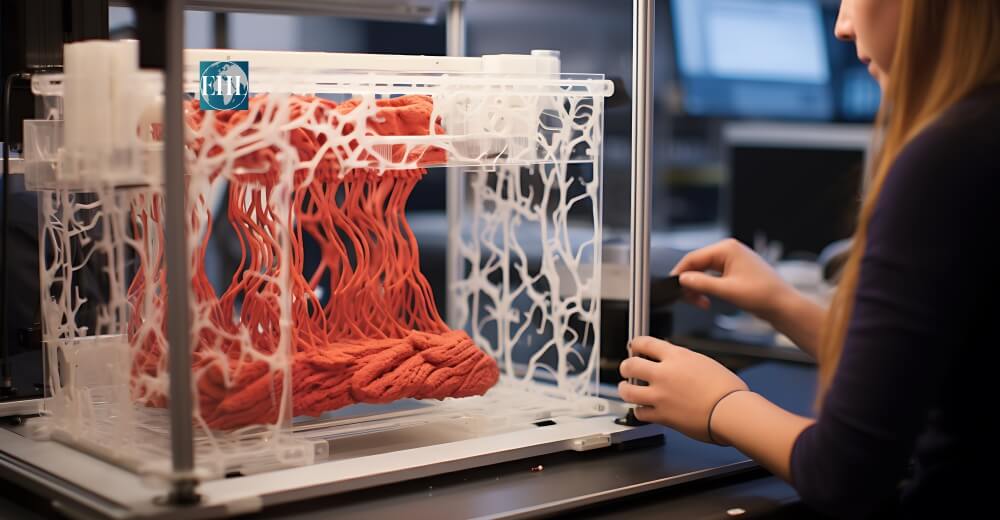3D Printing in Medicine
3D printing, also known as additive manufacturing, is a process in which objects are built layer by layer from a digital design file. In medicine, the raw materials can include plastic, metal, or even biological substances like cells. The process begins with creating a detailed 3D model using imaging techniques such as CT scans or MRIs. This model serves as a blueprint for the 3D printer to produce an exact physical replica of the object—whether it’s a prosthetic limb, an implant, or even a model of an organ.
The ability to precisely replicate a patient’s unique anatomy is a significant advantage of 3D printing in healthcare. This allows for more accurate, customized medical devices and solutions, tailored to the individual’s specific needs.
- Custom Prosthetics and Implants
One of the earliest and most impactful uses of 3D printing in medicine has been in the creation of custom prosthetics and implants. Traditionally, prosthetics were either mass-produced or required lengthy customization processes, making them expensive and time-consuming to produce. With 3D printing, healthcare providers can create highly personalized prosthetics that are tailored to a patient’s unique body structure in a fraction of the time.
For example, a patient who has lost a limb can have a custom prosthetic designed based on their specific anatomy. The 3D printer can create a prosthetic that fits perfectly, improving comfort, mobility, and overall quality of life. Additionally, the cost of these prosthetics is often significantly lower than traditional ones.
3D printing is also being used to create patient-specific implants, such as dental implants, joint replacements, and even custom-made bones. Surgeons can now print exact replicas of bones, which are particularly useful for complex cases where traditional implants may not be suitable. This level of customization allows for better integration with the patient’s body, reducing the risk of complications and speeding up recovery time.
- Surgical Planning and Training
3D printing is also playing a crucial role in surgical planning and training. Surgeons can now use 3D-printed models of organs, bones, or tumors to practice and plan complex procedures before entering the operating room. These models are created using the patient’s own medical imaging data, allowing the surgeon to visualize and interact with an exact replica of the anatomy they will be working on.
This hands-on approach to surgical planning helps reduce the risk of errors during surgery, shortens the length of operations, and improves patient outcomes. Surgeons can rehearse the surgery, explore various techniques, and make more informed decisions. This is particularly useful for delicate and high-risk procedures, such as brain or heart surgeries, where precision is critical.
In addition to surgical planning, 3D printing provides a valuable tool for medical education and training. Students and trainees can practice on lifelike models of human anatomy, gaining experience and confidence without the need for live patients. These models can be designed to mimic the texture and flexibility of human tissue, providing a realistic training experience.
- Bioprinting and Tissue Engineering
One of the most groundbreaking applications of 3D printing in medicine is bioprinting—using 3D printers to create living tissues and, potentially, entire organs. While still in its early stages, bioprinting holds immense potential for the future of organ transplants and tissue regeneration.
In bioprinting, instead of using plastic or metal, researchers use bio-ink, a material composed of living cells. Layer by layer, a 3D printer builds up the tissue, creating complex structures like blood vessels or skin. Scientists are working toward creating functional organs, such as kidneys or livers, which could one day solve the shortage of organ donors. If successful, bioprinting could revolutionize the field of transplantation, reducing waiting times and eliminating the risk of organ rejection, as the tissues would be created from the patient’s own cells.
Beyond organ transplants, bioprinting is also being explored for wound healing and tissue regeneration. For example, scientists are developing bioprinted skin grafts that can be used to treat severe burns or other injuries. This approach could provide a much-needed solution for patients who require large or complex skin grafts that are difficult to source from their own bodies.
- Personalized Medicine
Personalized medicine is an emerging trend in healthcare that tailors treatment to an individual’s unique genetic makeup, lifestyle, and health needs. 3D printing is a key enabler of personalized medicine, as it allows for the creation of custom-made devices, drugs, and treatments.
For example, 3D-printed drug delivery systems are being developed that can release medication at specific rates, times, or even in specific locations within the body. This targeted approach can improve the effectiveness of treatments while minimizing side effects. Additionally, 3D printing enables the production of pills that contain personalized doses of multiple medications in a single tablet, making it easier for patients with chronic conditions to manage their treatment regimens.
Challenges and Future Prospects
While 3D printing holds incredible promise, there are still several challenges to overcome. Regulatory approval processes for 3D-printed medical devices and bioprinted tissues are complex and time-consuming. Ensuring that these products meet safety and efficacy standards is critical. Additionally, the cost of bioprinting technology is still high, and more research is needed to perfect the process of creating functional, transplantable organs.
However, as technology continues to advance and become more accessible, the potential for 3D printing in medicine is limitless. The ability to create custom, patient-specific solutions not only improves outcomes but also makes healthcare more efficient and cost-effective.









